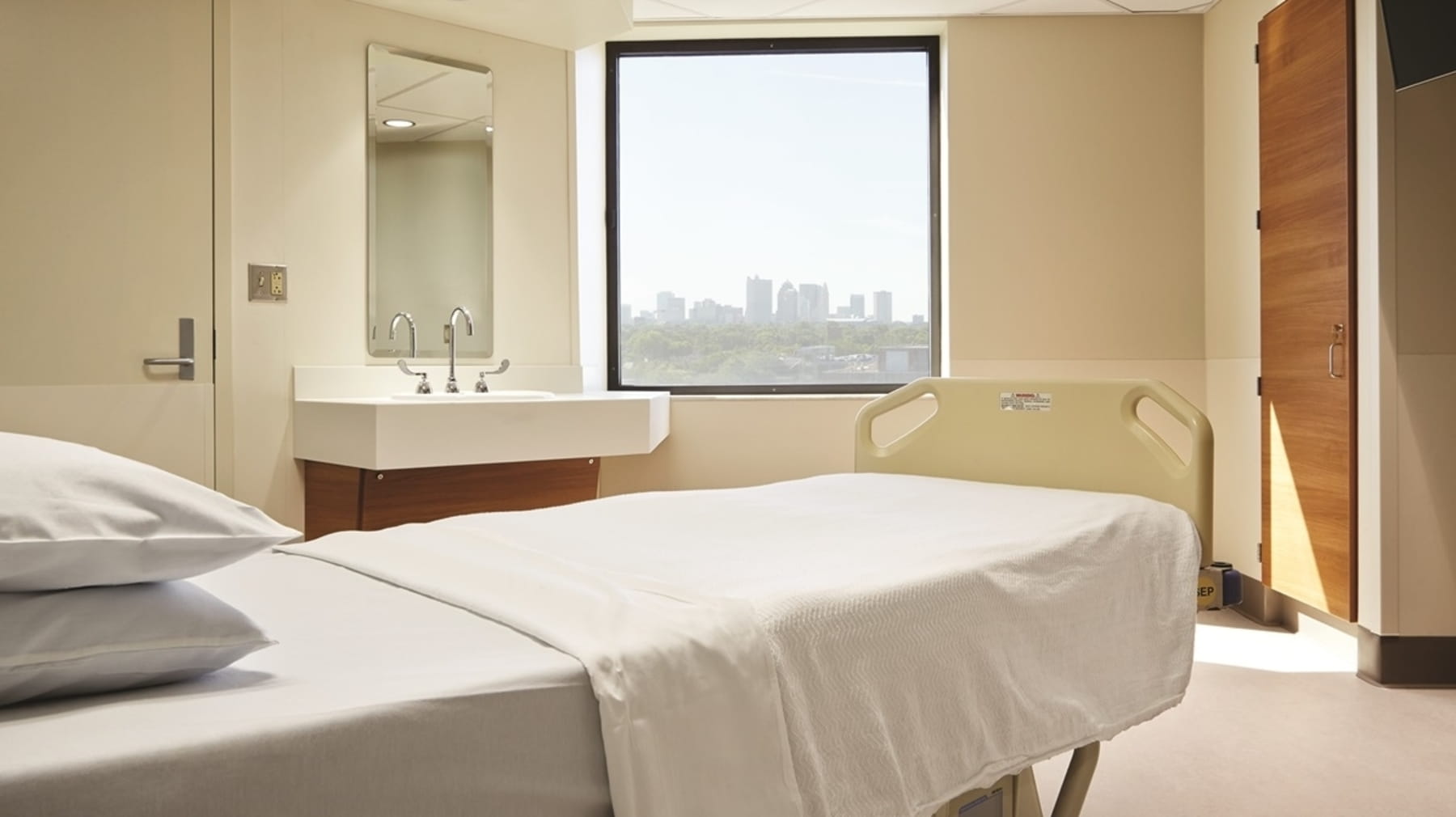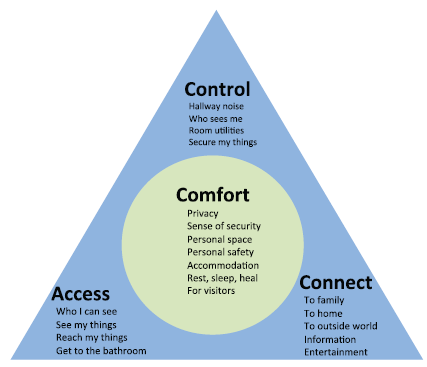Patients value control, privacy in hospital rooms
A hospital stay might be one of the most vulnerable periods of a person’s life, and their comfort during that time can affect how well and how quickly they heal.
New research from The Ohio State University Wexner Medical Center reveals that when it comes to hospital rooms, patients and their families care most about privacy, communication and control over lights, sounds and other disturbances.
How the study worked
Emily Patterson, associate professor in Ohio State's College of Medicine, School of Health and Rehabilitation Sciences, led the study, which was published in the "Journal of Health Environments Research and Design" and funded by the National Institute for Occupational Safety and Health.
Researchers asked 61 patients and caregivers to evaluate five different rooms. Those patients and their family members rated different room elements, such as bed placement, bathroom location, door and window sizes, storage areas, and surfaces for cards and flowers.
“We included a number of features we thought would be beneficial for patients, based on earlier interviews about challenges patients and caregivers had to overcome during their stay,” Patterson says.
Patterson and other researchers hoped that they could identify opportunities to better meet the needs and expectations of patients who need to stay in the hospital for multiple days.
The ideal hospital room experience lets patients transition easily from a state of dependence to independence as they prepare to continue their healing at home, researchers note. But some traditional room designs of the past overlooked elements that could help patients communicate better and have more control over their environment.
“When we’re sick and feeling vulnerable, it’s especially important to feel in control of our surroundings – privacy, room temperature, lighting, window blinds and having our things within reach,” Patterson says.
What researchers learned
That ability to adjust surroundings is most important to the patients and caregivers surveyed. Patients sometimes need to have procedures performed at their beds, to undress at the bedside, and to use bedside commodes.
Participants said it was paramount to have control over not only the lights, temperature and TV, but also over whether the bed area would be visible to someone in the hospital hallway.
Also among the top concerns was being able to see an electronic communication board while lying in bed. Without being able to read which procedures and hospital staff members are scheduled for each day, patients could feel disconnected from their own care plan.
What this means for patients and hospitals
Researchers were able to use patient and caregiver responses to develop a design framework that shows their key expectations for hospital rooms.

The framework placed patient comfort at the center of patient needs, as it "stays sharply in focus throughout the entire hospital room experience," researchers wrote.
“Some of the findings are inexpensive and possible to incorporate, even without changing architectural design,” Patterson says. “Each change can improve the patient and family experience by reducing unnecessary stress and anxiety and enhancing the healing process.”
The study's findings have been a popular read online – the research was among the most-downloaded articles in the most recent issue of "Patient Experience Journal," which reaches readers in more than 190 countries and territories.




